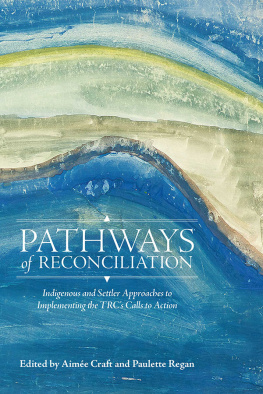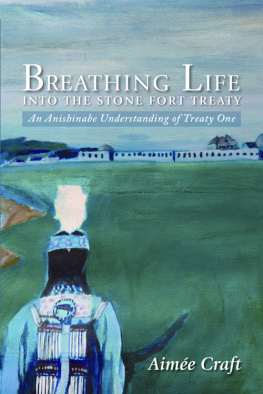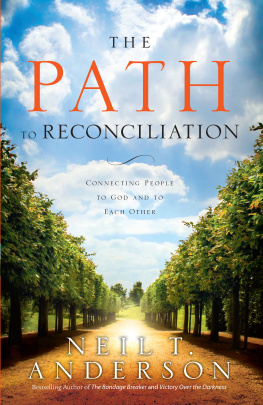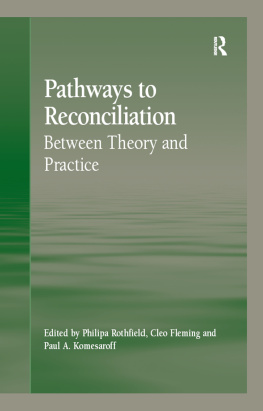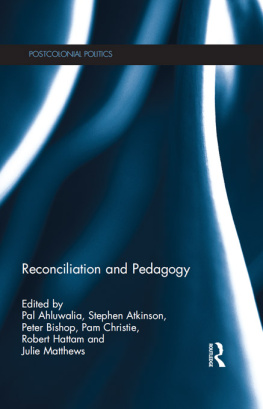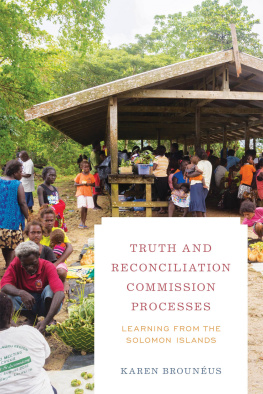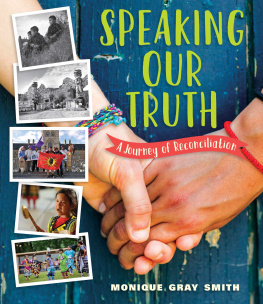Perceptions on Truth and Reconciliation
ISSN 2371-347X
2 Pathways of Reconciliation: Indigenous and Settler Approaches to Implementing the TRCs Calls to Action , edited by Aime Craft and Paulette Regan
1 A Knock on the Door: The Essential History of Residential Schools from the Truth and Reconciliation Commission of Canada , with a foreword by Phil Fontaine
Pathways of Reconciliation
Indigenous and Settler Approaches to Implementing the TRCs Calls to Action
Edited by Aime Craft and Paulette Regan
Pathways of Reconciliation: Indigenous and Settler Approaches to Implementing the TRC s Calls to Action
The Authors 2020
24 23 22 21 20 1 2 3 4 5
All rights reserved. No part of this publication may be reproduced or transmitted in any form or by any means, or stored in a database and retrieval system in Canada, without the prior written permission of the publisher, or, in the case of photocopying or any other reprographic copying, a licence from Access Copyright, www.accesscopyright.ca, 1-800-893-5777.
University of Manitoba Press
Winnipeg, Manitoba, Canada
Treaty 1 Territory
uofmpress.ca
Cataloguing data available from Library and Archives Canada
Perceptions on Truth and Reconciliation, issn 2371-347x ; 2
ISBN 978-0-88755-854-2 (PAPER)
ISBN 978-0-88755-856-6 (PDF)
ISBN 978-0-88755-855-9 (EPUB)
ISBN 978-0-88755-880-1 (BOUND)
Cover image: The Beach by Georgina Laing (Cootes), Uchucklesaht First Nation, n.d., tempera on paper, courtesy of Georgina Laing.
From the collection of the Residential and Indian Day School Art Research Program at University of Victoria.
Cover design by Kirk Warren
Interior design by Jess Koroscil
Printed in Canada
The University of Manitoba Press acknowledges the financial support for its publication program provided by the Government of Canada through the Canada Book Fund, the Canada Council for the Arts, the Manitoba Department of Sport, Culture, and Heritage, the Manitoba Arts Council, and the Manitoba Book Publishing Tax Credit.
With deepest respect to residential school survivors whose courageous and tireless actions speak truth to power and whose vision and wisdom guides us on pathways of reconciliation.
Contents
Aime Craft and Paulette Regan
Part One
Reframing
Chapter 1
Paved with Comfortable Intentions
Moving beyond Liberal Multiculturalism and Civil Rights Frames on the Road to Transformative Reconciliation
David B. MacDonald
Chapter 2
Perceptions on Truth and Reconciliation
Lessons from Gacaca in Post-Genocide Rwanda
Rgine Uwibereyeho King and Benjamin Maiangwa
Chapter 3
Monitoring That Reconciles
Reflecting on the TRCs Call for a National Council for Reconciliation
Cody ONeil
Chapter 4
A Move to Distract
Mobilizing Truth and Reconciliation in Settler Colonial States
Rachel (Yacaaa) George
Part Two
Learning and Healing
Chapter 5
Teaching Truth before Reconciliation
Erica Jurgens
Chapter 6
Learning and Reconciliation for the Collaborative Governance of Forestland in Northwestern Ontario, Canada
Melanie Zurba and John Sinclair
Part Three
Researching
Chapter 7
What Does Reconciliation Mean to Newcomers Post-TRC?
Cathy Rocke and Rgine Uwibereyeho King
Chapter 8
Healing from Residential School Experiences
Support Workers and Elders on Healing and the Role of Mental Health Professionals
Tracey Carr and Brian Chartier
Part Four
Living
Chapter 9
Bending to the Prevailing Wind
How Apology Repetition Helps Speakers and Hearers Walk Together
Peter Bush
Chapter 10
How Do I Reconcile Child and Family Services Practice of Cultural Genocide with My Own Practice as a CFS Social Worker?
Mary Anne Clarke
Chapter 11
Repatriation, Reconciliation, and Refiguring Relationships
A Case Study of the Return of Childrens Artwork from the Alberni Indian Residential School to Survivors and Their Families
Andrea Walsh
Sheryl Lightfoot
Introduction
There are often many roads that lead to the same destination. This can make the journey interesting, challenging, unique, and worthwhile. Sometimes, in fact, the journey becomes more significant than the arrival at any particular place and the distance travelled, and lessons learned along the way are the purpose of the voyage. The title of this volume Pathways of Reconciliation reflects our profound belief that reconciliation is not only an ultimate goal but a decolonizing process of journeying in ways that embody everyday acts of resistance, resurgence, and solidarity, coupled with renewed commitments to justice, dialogue, and relationship building.
However, these relationships among Indigenous peoples, settler Canadians, and the Canadian state cannot exist in a vacuum. If reconciliation is to be more than rhetoric or purely symbolic, there must be concrete actions that achieve real societal change,
The Truth and Reconciliation Commission found that conflicting views between Crown perspectives and Indigenous understandings of reconciliation persist:
Getting on with business and building a relationship are very different objectives and have vastly differing outcomes. This explains the current political context in which we find Indigenous governments and the Canadian government at odds on the terms of the nation-to-nation relationship. The ethos of relationship from an Indigenous perspective embodies the agreement to work together that was articulated by Indigenous nations in treaty making, while the governments perspective, supported by the legal jurisprudence of the Canadian courts, supports a vision of reconciling the prior occupation of Canada by Indigenous peoples with assumed Crown sovereignty.
The TRC calls for the United Nations Declaration on the Rights of Indigenous Peoples to be the framework for reconciliation in twenty-first-century Canada: Aboriginal peoples right to self-determination must be integrated into Canadas constitutional and legal framework and into its civic institutions in a manner consistent with the principles, norms, and standards of [ UNDRIP ]. Implementing UNDRIP requires significant change to existing structures and governing institutions of power. Sheryl Lightfoot, in the Conclusion of this book, provides a thoughtful analysis of the change that must happen in order to even come close to the implementation of UNDRIP in a Canadian context.
If the TRC s vision of reconciliation is fully implemented, Indigenous cultural knowledge, governance systems, and laws will be regenerated, and Indigenous nations will be restored to their rightful place as self-determining equal partners in Confederation. The TRC cautioned that it will take several generations and much difficult work to repair the harms inflicted on Indigenous peoples through the residential school system and other institutional policies and practices of colonialism. New knowledge of and respect for diverse Indigenous cultures, histories, and ways of life must be generated through collaborative dialogue and education.

